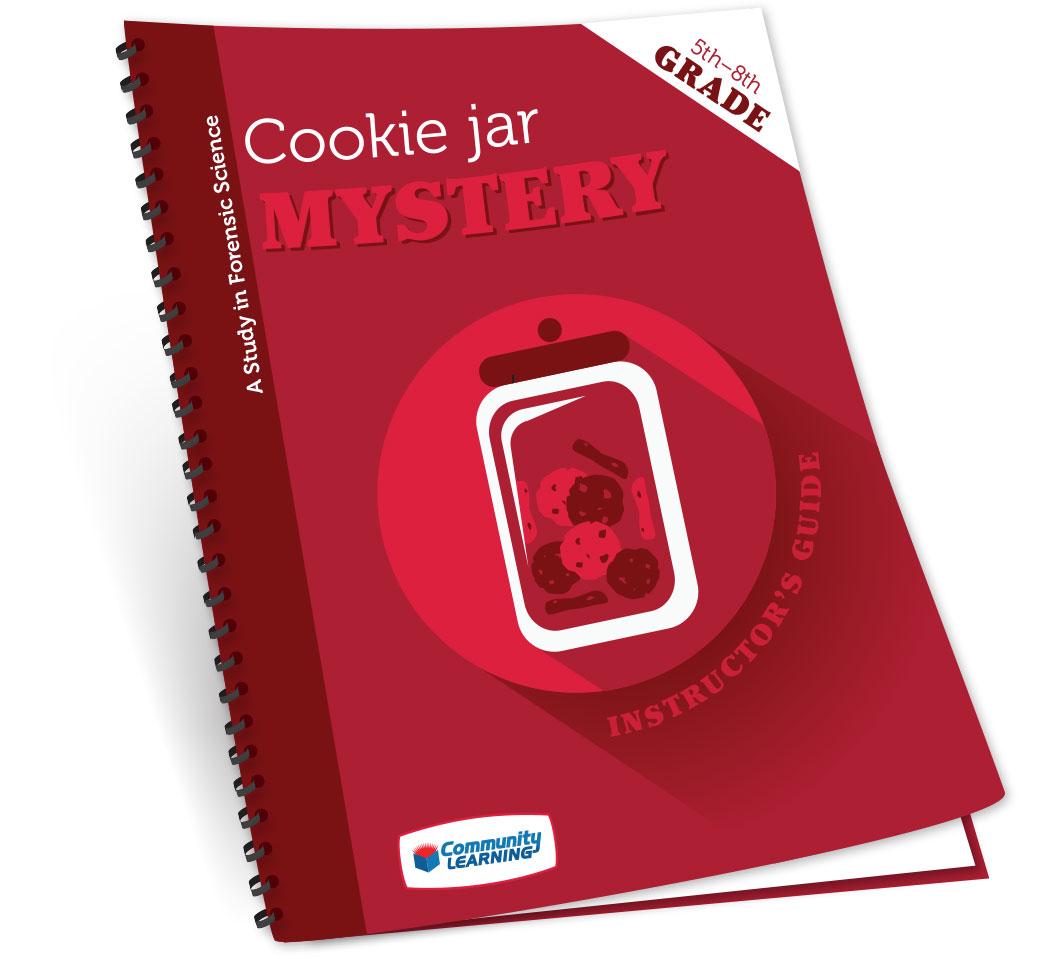Cookie Jar Mystery Teacher Tutorial
2nd Feb 2016

We're happy that you're about to embark on a unique teaching experience with your Cookie Jar Mystery: A Study in Forensic Science Course Kit! This course is designed to ignite curiosity and stimulate authentic learning by creating real-life contexts ranging from lab analyses to field work to criminal investigation.
We have prepared lesson by lesson tutorials with audio instructions to assist you in the preparation stages of teaching the course. No special technical or scientific (or forensic!) skills are necessary for you to teach The Cookie Jar Mystery.
However, I do find that the more preparation I can put into teaching a course, the smoother it goes! I also know that your time is valuable and I hope that these tips and tutorials will be a quick and easy way to get you started on the right note.
Tips, hints, and just plain great ideas!
|
|
Lesson 1: Heads Up - Observation Skills You can't believe your eyes or can you? Budding CSI investigators love to explore the challenge of visual memory and eyewitness testimony in this activity of "Did You See That?" Take your time as you work through and discussing the two activities in this lesson. It is important that an adult is prearranged to come help out with activity 1. Make sure that you confirm this in advance. This lesson is a great opportunity to talk with students about being detailed scientific observers. |
|
|
Lesson 2: Think Ink - Ink Chromatography The telltale composition of ink can help CSIs identify the perpetrator when students make their own ink chromatographs. Easy-to-follow instructions lead the way in your classroom's forensics laboratory. |
|
Lesson 3: The White Stuff - White Substance and Toxicology Take a powder, please! Students get a closer look at the differences in white substances (Of course they're all non-toxic!) and at the world of poison science in this riveting research. |
|
|
Lesson 4: Pull Some Strings - Fiber Analysis Can scientific analysis of fibers help identify our thief? Students use hand magnifying lenses to get up close and personal with fiber analysis, and learn to distinguish between class evidence and direct (conclusive) evidence. |
|
|
|
Lesson 5: Hair We Go - Hair Samples Who knew hair could be so complex? In this activity, can our junior gumshoes match a hair sample to the correct suspect? This absorbing inquiry will have students scratching their heads (and plucking their own hair!) as they delve deeper into the Cookie Jar Mystery. |
|
Lesson 6: Follow the Grain - Pollen Analysis Achoo! Pollen as evidence? Learners explore another form of trace evidence that often tells where something happened. Students do the legwork in the field as they practice with this essential tool. |
|
|
Lesson 7: Make an Impression - Bite Marks Surprisingly simple materials provide all you need for another great lesson in comparing and contrasting for students to "sink their teeth into." |
|
Lesson 8: Bloody Brilliant - Blood Types Of course, it's not real blood - but we do provide blood evidence substitute that encourages learners to handle evidence just like genuine CSI laboratory technicians. This lesson in blood typing provides a great jump start for future scientists, geneticists and crime scene detectives. | |
|
Lesson 9: One of a Kind - Fingerprint Evidence Oh, the things we leave behind! Everything you always wanted to know about whorls and ridges, fingerprinting technique and more with authentic Ten Cards for each student to make a record of his/her prints. | |
|
|
Lesson 10: Crack the Code - DNA Learning to unravel the mystery of our genetic code is revealed in this straightforward explanation and lesson helps learners narrow the field of suspects. |
Lesson 11: Let's Talk - Questioning Our Suspects A lie detector isn't the only way of getting at the truth! In this lesson, our junior CSI detectives learn the meaning of the "norm" and how knowing the norm helps sort truth tellers from liars. Students also return to the "scene of the crime" for another look. | |
|
Lesson 12: Who Dunnit? - Examining & Analyzing All the Evidence Means, motive and opportunity all come together in this culminating activity that encourages students to put all of the puzzle pieces together and finally solve the Cookie Jar Mystery! | |
|
| |
|
|

